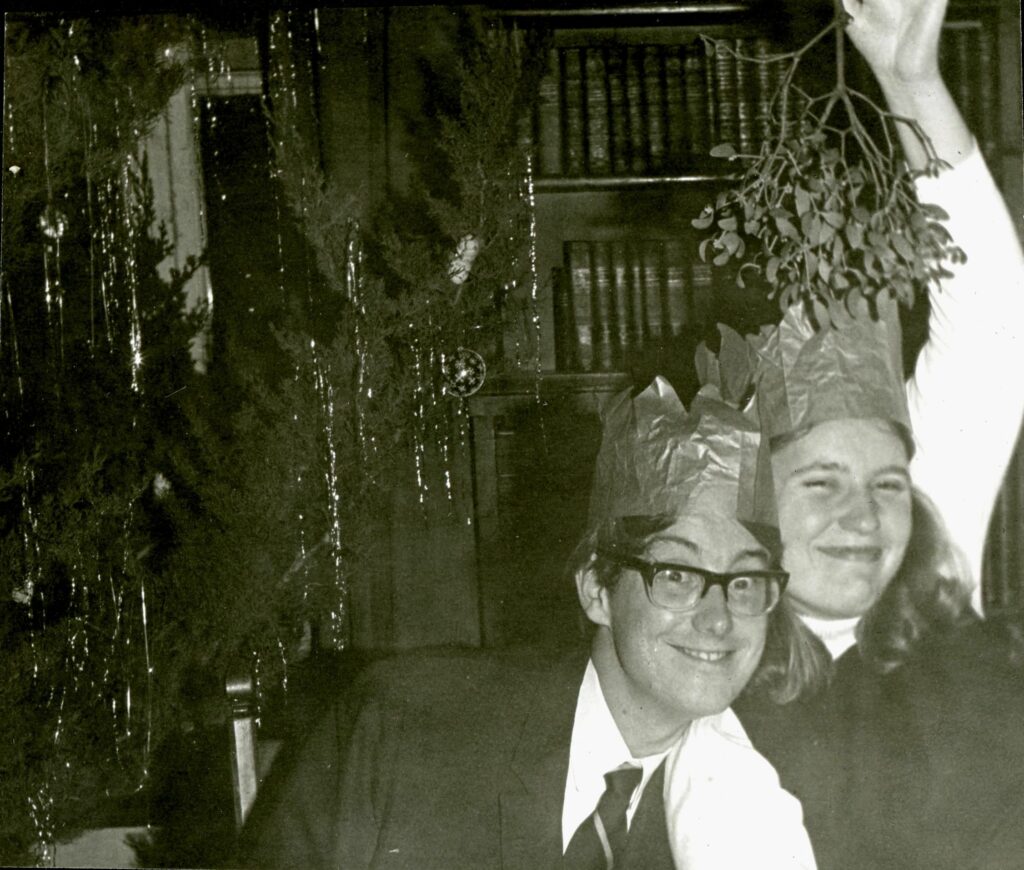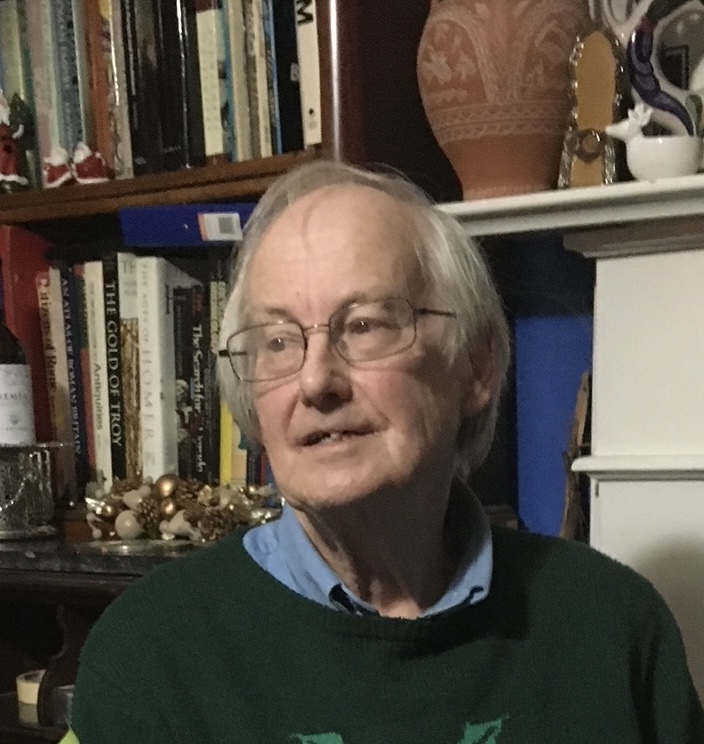Dr. Kenneth Anthony Wardle (1946-2024)
It is with great sorrow that we announce the death of Dr. Kenneth (Ken) Anthony Wardle at the age of 78.
Ken was a Senior Lecturer in the Department of Classics, Ancient History and Archaeology, University of Birmingham, and was widely regarded as a leading authority in Greek prehistory and the archaeology of Macedonia. He had a breadth of knowledge that allowed him to deal with different periods and times, applying interdisciplinary methods of research and showing minute attention to the details of excavation and stratigraphy. He was an inspiring teacher, who strove to make the past comprehensible to the others, and a philhellene, who spoke fluently ancient and modern Greek and spent much time in Greece.
Ken was educated at Warwick School and studied Classics at the University of Cambridge. Then he took his MA and PhD from the Institute of Archaeology, at the University of London. His PhD thesis on the Bronze Age West of Pindus (1972) was a groundbreaking study which – although never published as a book – remains a standard reference to this day.
Ken started visiting Greece in the late 1960s as a student of the British School at Athens, which would become his second home. He was appointed BSA Macmillan Student for both the 1970/71 and 1971/72 academic years and later he served as a Member of the Managing Committee/Council, as well as holding the post of BSA Visiting Fellow in the 1994/95 academic year.

Ken and Diana Wardle at the BSA, Christmas 1970. BSA Archive.
In the early 1970s, he continued his research thanks to major scholarships, including an Alexander von Humboldt Fellowship at the University of Heidelberg. He used to describe his youth as a constant “hunt of the Dorians” in his archaeological trips. Ken had a long relationship with the British School at Athens, starting as a student in the late 1960s when he first came out to Greece for excavations.
In 1977, he was appointed to his post at the University of Birmingham, where he worked for four decades, combining research with the teaching of Minoan and Mycenaean cultures, early Classical archaeology, the archaeology of Macedonia, archaeological theory etc. During his career, he trained generations of undergraduates and postgraduates, and supervised more than 20 PhD students, many of whom acquired distinctive positions in Greece and abroad. He also curated the departmental collection of antiquities.
In 1975, Ken started his own excavation at Assiros Toumba, near Thessaloniki, with the support of the BSA, and later the University of Birmingham. The excavation lasted until 1989 and brought to light a long-lived settlement, with successive phases of occupation from the Middle Bronze Age to the Early Iron Age (2000-700 BC). The results have been published in a series of reports in the BSA and in several specialized studies. Particularly notable was the discovery of 13th c. BC granaries with charred plant remains. Careful sampling and archaeobotanical study led to the identification of various crops (wheat, barley, millet, bitter vetch) and provided valuable information about the Mycenaean system of agricultural production. In addition, C14 dating of over 60 organic samples has contributed to the absolute dating of 2nd and early 1st millennium BC in Greece and may have wider implications for the end of the Bronze Age.
Between 1992 and 1995, Ken directed another excavation at Knossos, Crete, which sought to explore the little-known Roman layers of the city. The project was supported by the BSA and the University of Birmingham and funded by the British Academy and other sponsors.
Ken was also a pottery expert. Early in his career, he collaborated with Lord William Taylour and Elisabeth French for the study of pottery groups from Mycenae, which he published in the BSA (1969, 1973), clarifying the complex stratigraphic sequence of the 13th c. BC and providing a valuable guide for hundreds working in the same period. In 1994, he was invited by Professor Ioannis Papapostolou, Director of the Athens Archaeological Society excavations at the Archaic-to-Hellenistic sanctuary of Thermon in Aetolia, to undertake the study of prehistoric and early historic pottery. The work was in the final stages of preparation for publication by the Athens Archaeological Society when Ken passed away.
Ken felt also the responsibility of publishing the results of old excavations conducted by others. In 1983 he launched the “Well Built Mycenae” series, together with Lord William Taylour, Diana Wardle, Rayna Andrews and Lisa French, which made available the results of Helleno-British excavations led by Taylour between 1959 and 1969. Ιn 1996 he edited the results of the 1961-64 excavations of R.C. Rodden at the Early Neolithic settlement of Nea Nikomedeia, and in 2000 he published together with C. Ridley. C. Mould the results of the 1971-73 Anglo Hellenic excavations at Neolithic Servia.
Ken’s most recent work was a multidisciplinary project on the use of the Mycenaean armour of Dendra. In a series of archeo-physiological studies, merging knowledge in archaeology, history, human physiology, and numerical simulation, the team has provided evidence that the armour was compatible with use in extended combat, and produced a free software enabling simulation of Late Bronze Age warfare.
In all these projects, Ken had the valuable assistance of his beloved wife Diana. They met in London as students and became inseparable until 2023 when Diana passed away. Among other things, they shared a strong interest in making archaeology accessible to the public. This they achieved via experimental research, school programs, exhibitions, and Diana’s lively drawings which illustrated both booklets for kids and scholarly publications.
As a mentor, Ken was always supportive of his students and encouraged them to obtain their own perspective of the past. He was also eager to help anyone who asked for his guidance. On one of his last trips to Greece he spent four hours talking to high school students in Trikala about the science of archaeology, the excavations and the work of the Foreign Schools in Greece; he advised them on opportunities for education and training and encouraged them to remain open to continuous learning. The students were captivated by his presentation and fascinated by his eloquence and passion for new discoveries and interests despite his age. One of them even wrote afterwards that “he was like a young child, always willing to travel the world for his work that he loves so much”.
Ken had a sensitive, warm personality and dedicated his life supporting his loved ones. In the words of a friend, “for his wife, daughter and grand-daughters, he was the rock on which their family was built”. Ken and Diana’s hospitality was legendary and none of their friends will ever forget the large Christmas dinners they hosted every year, masterly cooked by Diana herself.
Ken’s immense legacy will live on, through his articles and outstanding reports, and also through the dozens of the students he supervised and supported, and all those people who were lucky enough to know him in person; we will always remember those little things that make someone special, how he finished every single phrase with laughter, his bright, penetrating gaze behind his glasses, his knightly manners and generosity.
Ken is survived by his daughter, Nicola and two grand-daughters, Amalia and Kleio.
Written by: E. Konstantinidi-Syvridi and N. Papadimitriou
NOTES:
1. For a list of Ken Wardle’s publications, see https://artsweb.cal.bham.ac.uk/aha/kaw/pubs.htm
2. We would like to extend our warmest thanks to R. Arnott, F. Balamoti, S. E. Cleary, T. Leahy, K. Harvey and the BSA for their valuable help.
